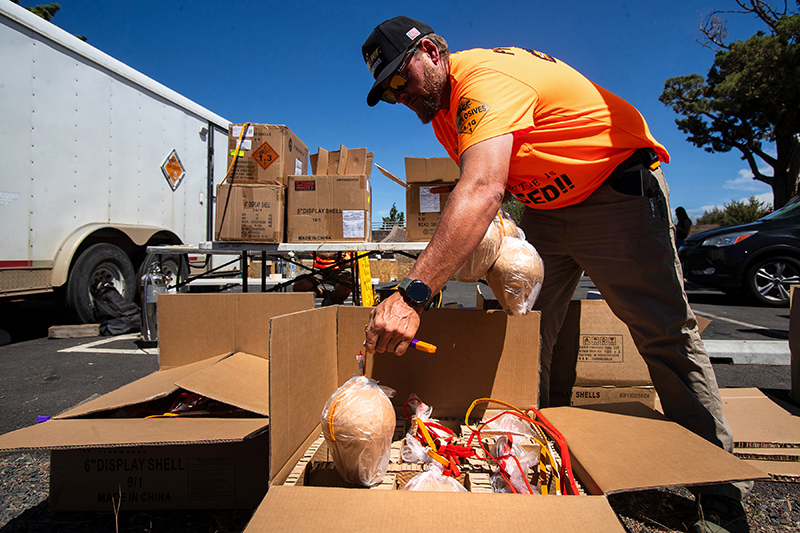Study: Fort Stevens State Park supports 600 full-time jobs
Published 12:00 am Thursday, January 4, 2018
Nestled along the South Jetty of the Columbia River in the most northwest point of Oregon, Fort Stevens State Park apparently offers more than historical significance and natural wonder.
A six-year study by the Oregon Parks and Recreation Department found that Fort Stevens was the second-highest economic driver of the more than 150 state parks. All the parks combined were found to add $1.1 billion to the state economy. Gas stations, grocery stores, restaurants and bars were the primary beneficiaries.
Nearly 1.5 million visitors spend $40.1 million in and around Fort Stevens in a given year. The park also supports nearly 600 full-time area jobs.
“I’m not surprised,” Park Manager Justin Parker said. “People do come from a long ways away. People stay longer here than at any other park.”
The study was based on visitor surveys conducted at each state park for one year, though not all parks were studied in the same year. Figures for many coastal parks, such as Fort Stevens, came from 2011 surveys, while the surveys in eastern parks were conducted last year. Overall, visitors to coastal parks totaled roughly half of all spending.
The park, based around a fort built during the Civil War to guard against a potential British invasion, does not lack historical draws. Though it closed as an active military site after World War II, dated batteries and barracks remain for visitors to tour on the north side of the park. The Peter Iredale shipwreck has been settled on the park’s beach for more than a century.
A mock Civil War battle, the largest of its kind in the state, is held near the spot where an actual attack from a Japanese submarine took place during World War II. The attack marked the only offensive launched against a U.S. mainland military installation in that war.
The 4,300-acre park also features hiking and biking trails, swimming and fishing opportunities at Coffenbury Lake, clamming and driving on beaches and dozens of camping sites — some of which are year-round.
“I think the historical aspect is a real draw,” Parker said. “The cabins and yurts drive visitation because you can camp in bad weather with less gear.”
Nearby destinations like Astoria also convince people to travel from longer distances, Parker said. The study found that 89 percent of spending came from nonlocal visitors, defined as those who traveled from more than 30 miles away. In comparison, nonlocal spending accounted for 56 percent of output in all state parks.
The last time the state Parks and Recreation Department conducted such a study was about 15 years ago. Parks at that time drove between $700 million in spending, Parks and Recreation Department Associate Director Chris Havel said.
“We have seen an unusual level of growth the last few years,” Havel said. “It’s a little stronger than even we’ve thought.”
While not entirely sure, Havel speculated that a rise in gas prices a few years ago may have benefited state parks.
“That led many people to rediscover the wonders in their own backyards,” he said.
Soon after the report was released, the department announced potential new camping fee rules.
The state Legislature passed a bill during the 2017 session mandating that the Parks And Recreation Department develop rules to set a range of fees for every park. It gives the department the authority to raise or lower rates at any park by up to $5. Rates would be specific to recreational vehicle sites, cabins, yurts and tent sites.
As such, the department can raise fees at high-demand parks and lower them at others.
“Many of our parks have capacity, but people just don’t know about them,” Director Lisa Sumption said in a news release. “These are real gems, and now we have the ability to experiment with price to see if we can entice people to explore a new park.”
Fees for yurts at Fort Stevens range from $48 to $58 per night. Cabins cost between $92 and $102; tent sites are $22, and hookup sites for recreational vehicles range from $32 to $34.
The department tentatively plans to run a pilot program next summer and may implement permanent fee changes in 2019. Havel does not want to guess what that will mean for Fort Stevens, but he did acknowledge the park’s popularity.
“That’s a good side effect of having a well-run park,” he said.
Visitor experience is more important than economic results, he said. Improvements at the park next year will include picnic table and wastewater refurbishments, restroom and guard-house repairs and hazardous tree removal.
Parker does not play a role in the decision making, but he figures that the park’s reputation will precede it when fee changes are discussed.
“Fort Stevens is a highly recognized park and has a historical infrastructure,” he said. “That will factor in.”








